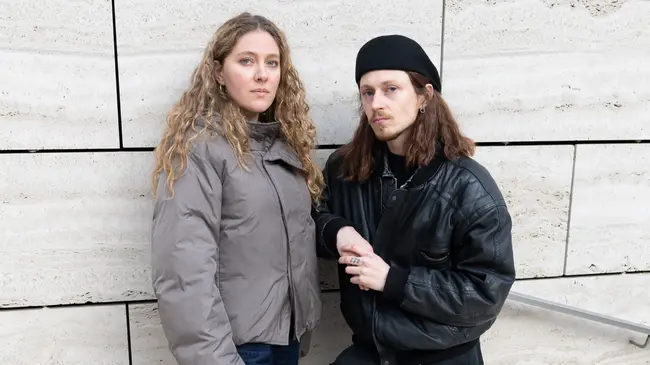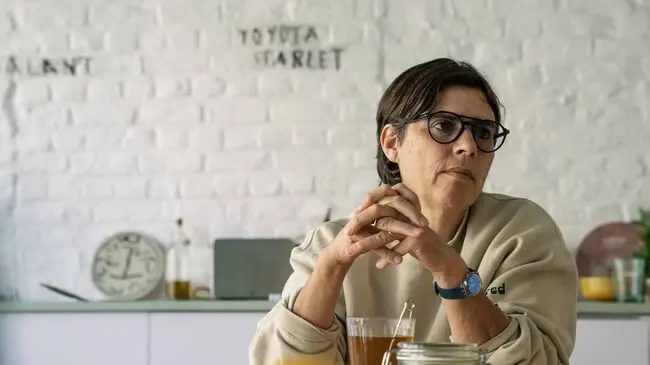Like a moth to a flame

In this digital day and age where we are overwhelmed with selfies and where facial recognition has taken away a part of our anonymity; the face has become some sort of currency. With 'Turning Heads' the KMSKA manages to highlight the face in a more intimate manner. While joining Tina Lewis Herbots, an Antwerp based photographer and filmmaker, we explored the stories behind these faces and learned more about her love for the Old Masters.
Thanks for being here with us Tina! Before we take a look at the exhibition I’m curious, would you have gone if it wasn't for this interview?
Definitely! During Covid I worked for Bernaerts Auctioneers and they sell a lot of Old Masters. Despite the fact that I had already learned about these Masters in art history, it was only during that period that I truly started appreciating them. Working there taught me to look longer at paintings. I now get more input from a painting when I look at it. Because of this I developed a love for Rubens. I not only love his ability to create elaborate stories on a canvas, but also his technique. ‘How can I create a story with one image?’ I’m always searching for this answer in a gentle and poetic way. So I’m really looking forward to this.
<img class="editorial-image" src="https://cdn.prod.website-files.com/61eebcc683107b99137f4423/658074c1af323bf6ab411ec9_tina_herbots_2023_theresa_buechner_2-min.webp"/>
How does your photography background influence your way of seeing things?
Very early on I noticed that it created a heightened awareness regarding the influence of light. For example, when I’m sitting at home and the light enters the room softly, I can really sense it. It seems to have a big influence on my daily life. I’m always questioning how many lamps there are in each room, if you can dim them and if they have the right colour. It became somewhat of an obsession [laughs]. It’s fair to say that light takes on an essential role, which also leaves a mark on my work.
This also explains why you immediately seem to gravitate towards the elements of light in the paintings. In what ways do you use elements of light in your own work?
Something that characterises my work is the use of flat and soft light. I always try to keep a lightness and warmth in it. But when looking at a painting like the one in front of us, Hieronymus Bosch’s Christ Carrying the Cross, it encourages me to experiment more with the contrast between light and dark. You can sense that the depth in this painting helps to narrate the story. After seeing this I want to immerse myself into the potential of light.
<img class="editorial-image-50-left" src="https://cdn.prod.website-files.com/61eebcc683107b99137f4423/658074c124b83f28fde062d7_tina_herbots_2023_theresa_buechner_10-min.webp"/>
<img class="editorial-image-50-right" src="https://cdn.prod.website-files.com/61eebcc683107b99137f4423/658074c203a1ce73e118a7ab_tina_herbots_2023_theresa_buechner_3-min.webp"/>
What’s the first thing you notice when you look at the lighting in the exhibition?
When we first entered, I noticed the blinds and the windows. I like the way in which they allow for a soft outside light to come into the room. Because of the big windows, there are different ways to experience the exhibition depending on the time of your visit. During the day, they allow you to experience the artworks with this soft and natural lighting. I can imagine it being beautiful in the evening, but honestly I’m glad I’m seeing it during the day. The daylight adds a more modern light which moves very freely.
You can sense that the depth in this painting helps to narrate the story. After seeing this I want to immerse myself into the potential of light
<img class="editorial-image" src="https://cdn.prod.website-files.com/61eebcc683107b99137f4423/658074c170f97d0a10914f4e_tina_herbots_2023_theresa_buechner_4-min.webp"/>
Do you think there’s a big difference in the way faces used to be portrayed?
From what I can see there are still a lot of commonalities with modern day classical portraits. There’s a lot of attention to light and they already created a connection with their subjects. In single portraits they use a very minimal background, to draw attention to the face. I love how this exhibition shows a lot of face studies, which can be seen as works of art in their own right. For me it’s easy to ask a model to tilt or move their face, but in a painting it takes a lot more effort to show these different perspectives.
I noticed that you also use a lot of monochrome backgrounds in your shoots.
That’s true! It’s not always a conscious effort, but I sometimes enhance this by digitally changing the colours in the background. I like working with a background or a location, but it always needs to support the subject. It needs to help draw attention to the person in front of the lens, and I’ve noticed that when working on a location, I’m intuitively drawn to these types of settings.
<img class="editorial-image-50-left" src="https://cdn.prod.website-files.com/61eebcc683107b99137f4423/658074c141f22150332edbad_tina_herbots_2023_theresa_buechner_1-min.webp"/>
<img class="editorial-image-50-right" src="https://cdn.prod.website-files.com/61eebcc683107b99137f4423/658074c1d295139ab6563f9e_tina_herbots_2023_theresa_buechner_9-min.webp"/>
You mentioned the facial studies from the exhibition. What is your research process?
I look at a lot of images and create mood boards on Pinterest. It helps me to collect images. I learn from observation. For example, when I go to exhibitions I like to read all the accompanying texts and earlier it was mentioned that one painter's faces were painted after the work of da Vinci. This confirms how we can learn a lot by simply looking. For me, the poses of these studies are really interesting. They are less static and have a different way of catching the light because they are not looking directly at the lens. These off-poses create a sort of anonymity.
<img class="editorial-image" src="https://cdn.prod.website-files.com/61eebcc683107b99137f4423/658074c0ac75b8721c374671_tina_herbots_2023_theresa_buechner_5-min.webp"/>
Are you inspired by today’s exhibition?
Yeah, I truly am. The AI generated image at the end really resonated with me. It’s a striking image which makes me want to push boundaries. It got me thinking about what it is that makes an image stand out. When looking at portraits, it’s the gaze that first catches my attention. So after today I’m already looking forward to experimenting more with people’s facial expressions.
<div class="editorial-banner"> <div class=“editorial-credits”> @tinalewisherbots / @kmska_museum </div></div>
Different Class works with the interest of their community at heart.
Our work’s purpose is to foster a solid network for independent artists, those who love them, and those who want to support them. Become a member to contribute to the local Belgian art scene.





